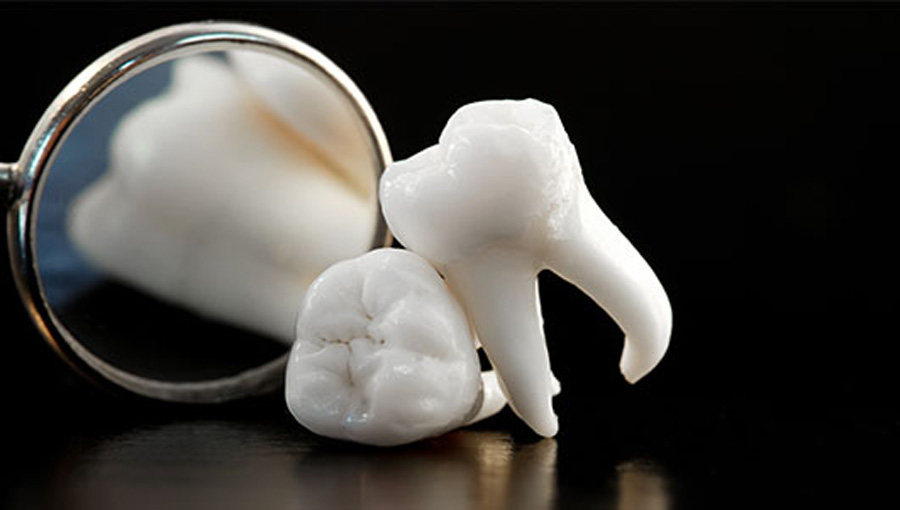When would I need a tooth extraction?
- In cases of infection when procedures such as root canal therapy, crowns, or fillings have failed to save a tooth, the tooth may need to be extracted.
- In some cases if there is lack of space in the jaw in order to move the teeth with braces, teeth may need to be extracted before orthodontics begins.
- In cases of severe gum disease where the teeth are hanging loose in the mouth.
- Impacted wisdom tooth.
General Procedure-
Tooth extraction procedures today are far less painful than ever before, thanks to powerful anaesthetics and skilled surgeons. Before a tooth is extracted, the area surrounding the tooth is numbed with a topical anaesthetic followed by an injectable anaesthetic such as Lidocaine. Patients may sometimes need to take a course of antibiotic before commencing the treatment. Dentists will separate the tooth from the gum and then use a forcep to remove the tooth. After this they will place a gauze piece and ask you to bite on it for an hour to control the bleeding.
Wisdom Teeth
Wisdom teeth are the third and final set of molars that erupt in the back corners of the upper and lower normal adult mouth. Unfortunately, most people experience problems from wisdom teeth; in most cases, this is because the teeth erupt too close to existing permanent teeth, causing crowding, improper bites, and other problems.
If wisdom teeth are causing a problem, this could mean that they are impacted. Impacted wisdom teeth can be extremely painful, as well as harmful to your oral health.
Symptoms are easy to spot:
- severe discomfort while chewing
- inflammation in the gum surrounding the tooth
- Pain in the jaw which may radiate to ear pain
- Swelling on that side of the face
Many people need to have their wisdom teeth extracted to avoid future serious problems. In general, the lack of the four wisdom teeth does not hamper one’s ability to properly bite down, speak or eat.
Procedure-
The dentist will first give you topical followed by injectable anaesthesia. Your dentist would then cut the gums and bone tissues surrounding the teeth with the help of a drill and then grasp the teeth using forceps. The tooth is loosened from the jaw bone and ligaments that hold it in place by moving to and fro. After extracting the tooth, your dentist places gauze into the socket and have you bite down on it to stop bleeding. In some cases stitches are required which are self-absorbable in most cases.
Precautions-
Before extraction inform your doctor of any medical conditions that you may be suffering from such as high blood pressure, diabetes, low blood pressure, cardiac condition, liver disease etc. Also inform your doctor if you are currently taking any medication because they may have to be stopped before the procedure.
After care-
Recovery typically takes a few days. The following can help minimize discomfort, reduce the risk of infection, and give you a speedy recovery.
- Take painkillers as prescribed.
- Bite firmly but gently on the gauze pad placed by your dentist to reduce bleeding and allow a clot to form in the tooth socket. Change gauze pads before they become soaked with blood. Otherwise, leave the pad in place for one hour after the extraction.
- Apply an ice bag to the affected area immediately after the procedure to keep down swelling. Apply ice for 10 minutes at a time.
- Relax for at least 24 hours after the extraction.
- Avoid rinsing or spitting forcefully for 24 hours after the extraction to avoid dislodging the clot that forms in the socket.
- After 24 hours, rinse with your mouth with a solution made of 1/2 teaspoon salt and 8 ounces of warm water.
- Do not drink from a straw for the first 24 hours.
- Do not smoke, which can inhibit healing.
- Eat soft foods, such as soup, pudding, yogurt, or applesauce the day after the extraction. Gradually add solid foods to your diet as the extraction site heals.
- Continue to brush and floss your teeth, and brush your tongue, but be sure to avoid the extraction site. Doing so will help prevent infection.

